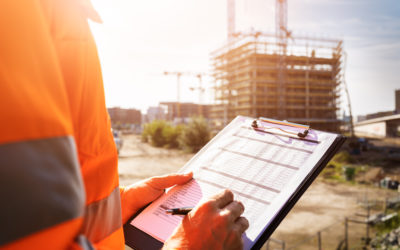The construction industry is among the most hazardous sectors, with a significantly higher risk of injury compared to other fields. In 2022, the National Safety Council (NSC) reported 255,000 injuries requiring medical attention and 1,008 deaths in construction, marking it as the industry with the highest number of preventable fatal injuries. Despite these risks, construction remains one of the top industries for alcohol and drug abuse, with 14.9% of workers using illicit drugs, nearly double the national average.
Construction sites demand constant alertness due to the use of heavy-duty equipment and fast-paced environments. Intoxicated workers pose significant risks to themselves, their colleagues, and the company. According to NCBI, accidents on construction sites are costly, averaging $4.1 million per incident, with non-fatal injuries costing around $44,000 per case.
Implementing safety protocols and regular onsite drug testing can significantly improve workplace safety and reduce costs associated with accidents. This post explores why construction companies should implement regular onsite drug testing.
The Importance of Regular Alcohol and Drug Testing
Drug tests aim to enhance on-site safety by identifying potential drug abusers who may jeopardize the safety and quality of work. Most states allow companies to enforce mandatory alcohol and drug screening without violating rights or privacy. Drug tests benefit both workers and companies by reducing risks and avoiding delays and expenses from accidents.
Accidents can lead to significant expenses, including medical bills, litigation, damages, regulatory fines, hiring replacement workers, and penalties for missed deadlines. OSHA estimates that construction companies save between $4 and $6 for every dollar invested in safety programs. NSC data suggests savings of $39,000 per prevented injury and $1,410,000 per prevented fatality.
How to Implement Alcohol and Drug Tests in the Workplace
- Decide How and Why to Test Workers: Create a policy outlining how tests will be conducted, whether pre-placement, post-incident, or random testing for high-risk roles.
- Update the Worker Handbook: Ensure the policy is compliant with state employment laws and update the handbook to inform employees about the new procedures.
- Communicate with Workers: Engage employees in Q&A sessions to explain the policy and address concerns. Collect signatures to confirm agreement.
- Prepare for Push-Back: Address concerns about testing methods honestly and openly, ensuring workers understand the procedures and their purposes.
Common Drug Testing Methods for the Construction Industry
- Saliva Testing: Quick, convenient, and effective, detecting drug use within the past 72 hours. Ideal for identifying chronic abusers. Learn more
- Urine Testing: Cost-effective and reliable, suitable for random and pre-employment tests. Detects drug use within the last 48 hours. Learn more
- Hair Follicle Testing: Highly effective for identifying drug use over three months, ideal for pre-employment screening but more expensive.
Get It Right with Help from Drug Test Professionals
Alcohol and drug abuse screening is crucial for ensuring safety on construction sites. Saliva testing is popular for its instant results, while urine testing is suitable for random and pre-employment tests. Visit our page to learn more about alcohol and drug testing methods and their importance for construction companies.

